#South Asian culture
Text

Mystic Swan Lifeweaver by Anggrishka
(based on the Mercy skin, concept by CitricWitch)
#lifeweaver#Anggrishka#overwatch#fan skin#fanskin#southeast asian culture#south asian culture#lunar new year#fusion
212 notes
·
View notes
Text
#LongPost: A Few Hyper-Specific Things About India for India-Based Stories and Art
No this isn't a cry for more Indian-rep in Spider-Verse stories. (It is.)
Anyway. I recently went to India, and after returning to my hometown in Tamil Nadu, I reintegrated a whole slew of memories and collated new facts.. And considering I've been wanting to do one of these for quite some time (and because I need a new variety of Pavitr Prabhakar content), I thought it'd be cool if I shared some of my experiences and ideas with you.
It's best to take this with caution, though: the only places I've been to are Tiruchirappalli, Madurai, and a few towns located close to the Eastern Ghats, so my knowledge is heavily South India-based. I know for a fact that there are various similarities and differences between other geo-cultural areas of India, which is I why I've linked the other cool India Resources here as well.
In Which I Ramble About Pavitr's Character Design and the Indian Cultural Stuff Related to It by @chaos-and-sparkles (+ my addition + @neptune432's addition)
A culture post for the girlie pops (and non-girlie pops) looking to write Pavitr Prabhakar accurately by @summer-blues-stuff (+ my addition + @fandomsfeminismandme addition)
Also a timely reminder of @writingwithcolor's wonderful resources on writing about South Asian characters respectfully and sincerely
Now, for the things I've noticed in South India..
ANIMALS
There are a lot of street dogs. Like... a lot of them. And honestly it's so hard not to go up to one and give them a snack or two. The most notable dog breed is the Indian pariah and they can be found all over India. Mixed dog breeds are also common and results in a variety of features like differences in build and coat colours.


There are also other types of animals are pretty common to see alongside the roads.
Cattle are seen a lot (cows and bulls are easy to distinguish; cows (left) have udders and a small hump on their back, while bulls (right) are generally stockier and have a super-defined hump on their back). I'm pretty sure the specific cow breed is the sahiwal cow. They are either herded into paddocks for grazing or can be found wandering city streets on their own.

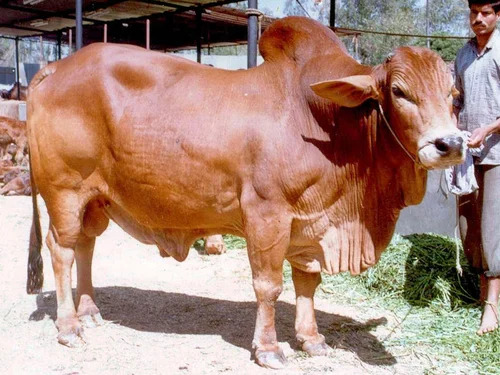
Goats are often herded by farmers into large masses of wool and horns and are guided to paddocks to graze. Sometimes, like cattle, they'll be found wandering city streets on their own.
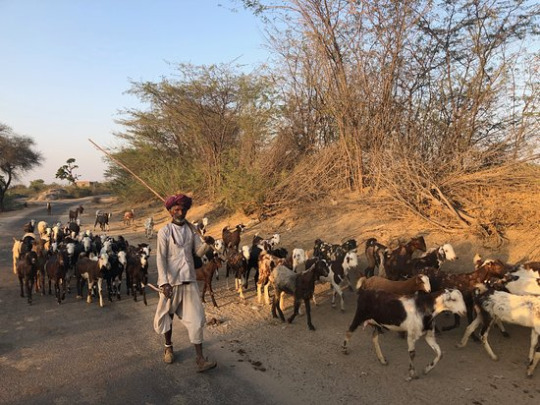
Chickens are usually kept close to stalls and homes. These chickens are not plump and fluffy like most Western chickens, but are quite skinny. Mottled feather colours are usually a result of mixed chicken breeds. In Tamil Nadu, the most common chicken breed is the asil chicken.
Various birds are often seen flying around traffic if they’re not disappearing into the sky, the most common being crows, pigeons and mynahs. (The chart below on the right is not an inexhaustive list of birds; you best search them up yourself.)
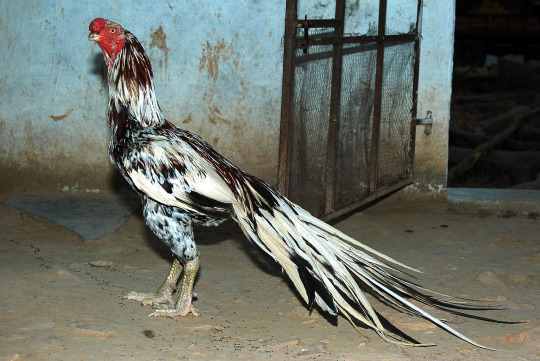

TRANSPORT
There is obviously a huge amount of trucks and lorries and buses. They all have beautiful designs or crazy LEDs or large detailed fluorescent / iridescent stickers that are impossible to ignore, whether it be at high noon or midnight.

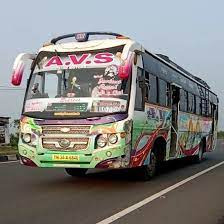
Expanding on that, the most common method of transport are motorcyclse or scooties, cars, and autos.
Also, as expected: traffic is insane. It’s horrible. It’s exhilarating. Western honking is akin to swearing, but here? Honk whenever you want. Honk if you’re happy or if you’re sad. You get a million dollars if you honk. You need to honk. It’s more important than breathing
Similarly, road rules don’t exist. Well, they do, and the Indian government does everything it can to make sure people do follow the rules, but based on the aforementioned honking, most people don't. Everyone just drives. Most bikers and motorcyclists don’t wear helmets. Only a few people wear seatbelts. Cars and motorcycles drive on the wrong side of the road and right into oncoming traffic. The chance of someone dying is 99% but it’s countered by desi stubbornness.

ENVIRONMENT & INFRASTRUCTURE
Houses and buildings are painted different colours!!! Pastel pinks and purples and deep teal hues, either plain colours or decorated with elaborate murals. This also applies to interiors. I reckon it was surprising to a lot of people when they were confronted with Mumbattan's vibrant colours, but honestly: coloured buildings slap, and it's based on the real thing. They are a sight to behold. Couple that with the architecture and oh boy- you've got such a beautiful environment.






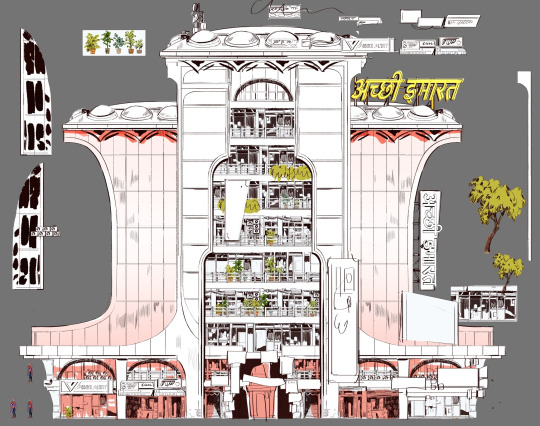
From @jettpack's concept art for Mumbattan buildings

jettpack's concept art of the Mumbattan collider
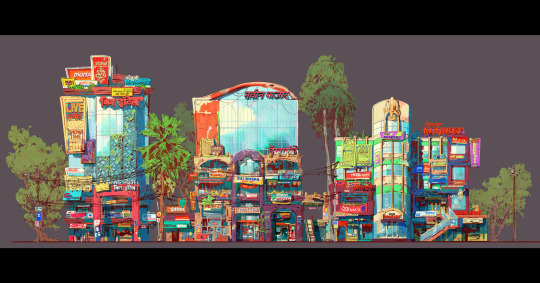
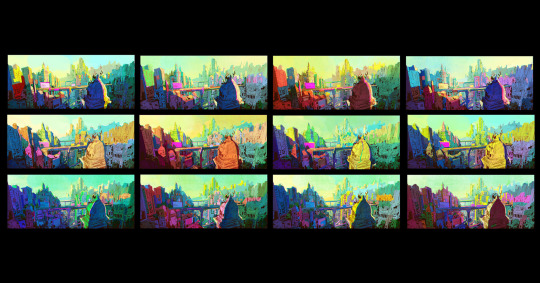
From @chenfelicia's concept and colour keys of Mumbattan
Don't be shy to really immerse in crazy descriptors - that's how you capture the liveliness of cities like Madurai and Mumbai and ultimately, their physical manifestations like Mumbattan.
Funny enough, movie posters and political banners and flyers are EVERYWHERE. They’re huge and take up entire billboards, or congregate along walls so it becomes practically a collage. It's impossible to ignore the image of "Makkal Selvan" Vijay Sethupathi about to beat some poor loser into a pulp with a stick, or the political parties roasting each other on paper with impressive photoshopped graphics.
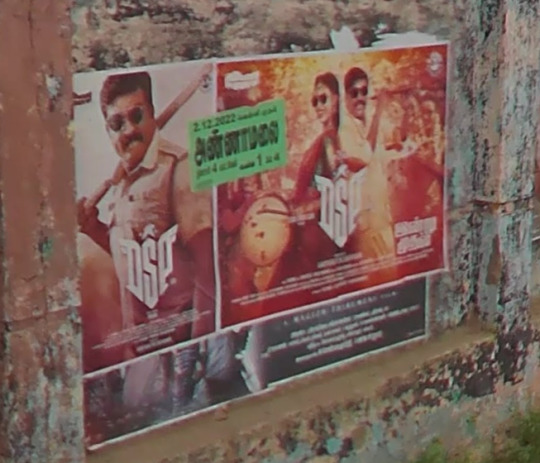

To tie in to the point about transport: there are hundreds of coffee stalls and snack shops and one-of-a-kind food stands. You can’t go 200 metres without running into one, either on the highway or in the city. I remember having jaggery coffee on my first night in India, and guys- it tasted so fucking good. I only wish I can transfer the taste to you. Absolutely splendid.
The climate in India is generally very humid and warm, but that doesn't mean we don't get cooler days; it is obviously cooler on winter nights. Also I've heard from many conflicting sources on India's seasonal weather (probably due to India's geograpghy), so you will have to talk to someone who is from India to really confirm. I've somewhat boiled it down to five seasons:
Summer - May-Jun; very hot (35-45ºC/95-113ºF), characterised by shrinking water bodies and droughts if there aren't any rainfalls; this time is good for plant growth/harvest if you've successfully managed water supplies
Monsoon - Jul-Aug; (34ºC/93ºF) very variable in terms of timing, characterised by torrential rains and floodings; the raining itself probably lodges somewhere in Jun-Sept but the aftereffects are felt long after the rains have stopped
Autumn - Sept-Nov; cooler but humid (25-35ºC/77-95ºF), and generally much drier since it transitions from autumn to winter
Winter - Dec-Feb; much colder, but the extent is dependent on geographic regions (20-25ºC/68-77ºF)
Spring - Mar-Apr; humid (33ºC/91ºF), sudden downpours, only occasionally do you get pleasant weather in this time
PEOPLE AND CULTURE
For some reason, there are still loud speakers blaring out music across the roads and as far as a few city blocks. I honestly thought that that had died out by the time my parents had graduated university, but it still seems like people like hearing music played at 120 decibels.
This is a complicated issue but people are not piss poor. Yes, India is a developing country, and yes there are slums and there are homeless and there are those who are stuck in a horrific sociocultural cycle, but people are rapidly getting into high-paying jobs at much higher rates than before. Overall, India is getting better; do us a favour and not have us be represented by the same poor struggle-riddled Indian stories that Hollywood and Western media is are fond of portraying.
@neptune432: One thing I think it's important to acknowledge though is how your experience in India changes depending on your caste. I feel like most of the indian voices talking online are savarna (I'm not an exception) so this doesn't get brought up as much. It's a complicated issue and one that I don't think non-indians (or savarna indians) should worry about tackling in their work, but it's worth saying because what's assumed to be everyday aspects of indian culture are actually specific to things like caste, class, and what region you're in.
ex: in kerala, there are also examples of people eating on banana leaf with lots of vegan food for special occasions (namely during onam). but veganism is heavily tied to brahmanism so most of these people will be savarna. even if they eat meat otherwise, the specific interest in eating vegan for special occassions has clear implications. Though many people of different castes eat meat, it's a practice that gets discriminated against, being treated as barbaric and unclean. this is because of brahmanism and is usually only strictly followed by brahmins. dalits/bahujan usually face the worse treatment for their eating traditions.
there's also the fact that hinduism is more of a recent term and a broad umbrella where many different gods and cultures have been put under (and usually done forcefully). a lot of local dieties and specific cultural practices come from outside the vedic traditions of aryans (upper caste north india), but now are treated almost as one thing. ex: kali is a south indian (dravidian) goddess who's still heavily worshipped there and who later got adapted to brahminical traditions. that's also why south indian practices of worship are different from the north and are discriminated against ex: north indians getting angry at the idea of worshipping kali by drinking alcohol and smoking even though it's an older tradition than theirs. these traditions are often connected to dalit/tribal cultures as well, which adds to why these traditions are attacked.
Now, I don't feel comfortable with non-indians writing about india in general but I feel it's important to mention these things cos most people don't even realize they're only getting shown certain perspectives. How many people don't even know they're a north/south divide, for example? People are fed narrow viewpoints on India and assume that's everything to know. it's a problem cos that's what the brahminical forces in india want. This is all very general info too and I'm no expert so it's worth more research (like reading what dalits have said on their experiences). I'm not trying to criticize you btw, I just wanted to add some things cos this has been on my mind for a long time now.
Couldn't have said it better myself, neptune!! (I barely mentioned it at all lmao) The caste system despite it being "abolished" still defines many traditions within India, and almost always in harmful ways. Like @summer-blues-stuff and I have mentioned in their post A culture post for the girlie pops under the Religion and caste section, it's best to leave the caste and social hierarchy alone even if you've done your research. That doesn't mean you shouldn't talk about it, it's just that people, especially those of non-South Asian decent, have to be extremely careful about it. Introductory resources on the caste system can be found on ABC, Pew Research and The Conversation.
Furthermore, the automatic assumption is that people living in shacks or remote villages have no access to greater populations and resources, which I'm happy to completely disprove. Guys: majority of the people living in my village, a rather remote village, have phones on them. Ranges from iPhones to Androids to good ol' Nokias.
(And, side note: as an Indian, I get amazingly pissed off when people's ringtones are set to maximum volume and play the same famous part of a famous song every time they get a call. Like shut the fuck up. At least quieten down? Please??)
(Also this might be a South Indian thing but Man some people are so entitled. Dudes you do not need to rub your ego into my face. Dudes you can, you know, keep all the cool things you think will get other people jealous out of the public eye. At this point I'm not jealous of what you Have, I'm pissed off at the Audacity To Think You Can Make Me Feel Bad About Myself With The Things That You Have).
Alright. Moving on.
Tiny temples and shrines are everywhere, dedicated to broad-Hinduism deities like Ganesh, Shakthi, or Vishnu; other times, they are shrines built for local deities that protect a particular village. For example, my village dedicated a little plot of water-logged land to a benevolent spirit called Subbamma, where people would leave offerings or place their sick/injured animals at the water's edge so that Subbamma could heal them. These tiny temples are almost always super colourful and amazingly detailed despite their small size


It could be a whole month before a celebration like Diwali but it’s the perfect time to set off hundreds of fireworks and firecrackers. People are just inconsiderate in many ways, it seems.
Some women wear strings of jasmine flowers in their hair. This might be completely regional-based, but most if not all women, ranging from little kids to old ladies, will wear these strings of jasmine in their hair. It's supposed to represent good fortune and beauty, and it smells wonderful.
@esrev-redips: #i usually only visit the north side of india (went to banglore and or chennai once) but im pretty sure most women in mumbai wouldnt wear #flowers in their hair unless they were of an older generation #they dont in new delhi at least and i t h i n k you can compare them but im not sure since i dont live in india either
Thank you esrev!!!!! glad to see an old hunch be confirmed!!!


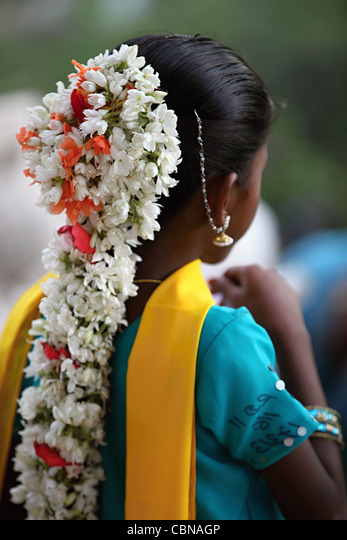
Normally you can wear any type of jasmine, but the common subtypes in Tamil Nadu are ஜாதிமல்லி (jathimalli; "Spanish jasmine"; left) and மல்லிப்பூ (mallipoo; right).


Eating food from a plate made from a banana leaf is more than just an aesthetic, and is often reserved for certain occasions; other times we eat from metal or ceramic plates. I can't vouch for other areas of India but I've been told the reason why banana leaves are predominantly used for large gatherings is because they can signal to diners if the food is rotten or has been poisoned; supposedly the leaf itself starts rotting and releases liquid, but I personally have never seen this happen. But of course, there are also other reasons as to why banana leaves are used (all of which are valid) ranging from being an eco-friendly disposable plate, offloading nutrients into food, or even to make the food taste better. Pick whichever reason you like.
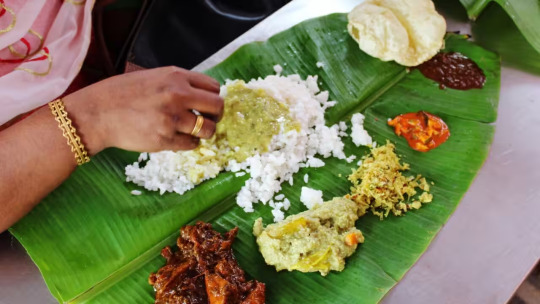
I'm literally so hungry looking at this. (Realises this is a Pavitr thing to say.) Anyway.
FOOD RECS!!!!!!
Reblog with your favourite foods >:) The list will be routinely updated...
JAGGERY COFFEE (from me) - GOOD FUCKING STUFF. ACTUALLY. if you see it.. GET IT IMMEDIATELY
PANI PURI (from @esrev-redips) - #also you forgot to mention the PANI PURI STANDS AHHHHHH YUMYUMYUM | RRRR YOU'RE SO RIGHT. PANI PURI FOR LIFE ACTUALLY.
JASUBEN PIZZA (from @the-witch-forever-lives) - okay this is specific to Ahmedabad | okay but as specific as it may be that sounds and looks delicious??? hello??????
DABELI (from @the-witch-forever-lives) - this too???? also it LOOKS wonderful i need it right now actually
VADA PAV (from @the-witch-forever-lives) - Also Vada pav from Mumbai is so one of a kind | you are absolutely correct. vada pav is truly something magnificent
I think that's about all I can give you right now. This took me a while to type out. Feel free to ask any questions, or if you have anything you would like to add on, like anything I might have glossed over or your favourite desi foods, please do!!! I'll be sure to reblog your addition and update the original post.
The point is that this post can become one of those few other reference posts that artists and writers and other creatives can use if they ever want to make anything related to India, because it's genuinely so cool to see your culture represented so well in popular modern media.
(And in fanfic and fandom. Especially in fanfic and fandom. you have no idea how many times I've gone insane reading a Pavitr-centric fic or reading comments on Pavitr-related posts and it's just outdated ideas and harmful stereotypes and all sorts of sick bullshit, and it's always to the point where I physically have to go outside and bite into a fresh rhizome in order to ground myself. Like damn, people, you need to know things before you start creating)
So uh, I hope this was helpful if not interesting! Happy early Diwali everyone! Knowledge-over-ignorance and all that; hopefully this post does that notion justice!
#pavitr prabhakar#wrote this solely because i wanted more atsv pavitr-centric fics and i need to get that specific immersed-in-india itch scratched#and also because the india i remembered decades ago is definitely not the india i visited last week#wow time flies doesn't it#spider man india#india#writing tips#o wise writer stuff#indian culture#south asian culture#spider man across the spider verse#atsv#across the spider verse#chaipunk#goldenpunk#cultural references#atsv pavitr#agnirambles
210 notes
·
View notes
Text
Tell me: Is He Gay or In a Sherwani?
Imposition of western norms in fandom analysis of Asian characters
With the rising popularity of Indian cinema sparked by the recent success of RRR on international platforms as well as the easy availability of multiple streaming services, in addition to the appearance of South Asian characters in prominent roles in western, particularly US media, I've begun to see some concerning 'analysis' posts online. So I thought I'd address something I found common in most of these takes.



Guys, characterizing your blorbos as queer is great and all, love it, but you're making a fundamental mistake by making their clothing choices the foundation for your queer headcanons, especially when it comes to male characters. Do not apply existing western cultural ideas regarding male clothing onto South Asian characters and their dressing please.
The vast majority of the clothes being used by people in various online spaces as 'evidence' of a character being queer(gay or bi mostly) are just normal Indian clothing for men, like daily wear. A top being pink or a character's wardrobe being mostly pastel means absolutely nothing...cos Indian clothing tends to be colourful in general and the tendency to ascribe colours masculine and feminine qualities is considerably less in the subcontinent. I'm not saying it doesn't exist, but generally not a concern.
There's also this pervasive idea that colourful clothing = flamboyance = queer and that itself is something many people have already pointed as a deeply flawed way of thinking and a stereotype. Furthermore, even if you do lean into the archetype of queer men being flamboyant, subscribing to the 'stereotypes exist for a reason don't they?' school of thought perhaps, there's also the fact that ideas of what is considered flamboyant change dramatically across different cultures. What is 'flamboyant' for someone might just be normal for others. Like maybe pink or purple or yellow might be considered too much, unmanly, emasculating etc in the US or something but they're just perfectly normal colours for men to wear in many, many cultures.
It's the 'Is he Gay or European?' principle. Did you characterize this Indian character (or any South Asian character really) as queer because of their canonical behaviour and portrayal, or did you just see their clothing and decide they're queer because being well groomed and having a colourful wardrobe is a character trait you exclusively ascribe to being queer?
Like guys, I like Chaipunk like the rest of you, but if you consider Pavitr queer just because his costume is a lot fancier than the others' (An actual take I've seen multiple times) without taking into account his cultural background....¯\_(ツ)_/¯
Let me make this clear, I don't think people need a ten page analysis to imagine their fave as queer. Headcanoning a character as queer can have any reason ranging from 'I said so and so it is' to 'this is my light character analysis that makes a masters thesis look shabby' and they're all valid and an integral part of the fandom experience. What I am annoyed at are these so-called 'well-researched' theories that did not make the slightest effort to look into South Asian culture and simply transposed their western bias onto Indian media and confidently make flat out wrong judgements and mislead other people. Clothing based sexual identity determinism is the least of it. That I can at least understand through the lens of a habitual process built through years of analyzing crumbs of queer representation available only through queer coded characters and symbolism such as clothing choices being the only way to see an aspect of yourself portrayed in an aggressively heteronormative media ecosystem. I do that too, because media is tragically heteronormative everywhere. But the rest? Its just straight up misinformation and misrepresentation touted as truth.
Its the same with relationships between men. There are plenty of cultures where skinship between men is not unusual and dynamics and nuances tend to be vastly different from western representations of male friendships. In xianxia and wuxia fandoms you can see this same problem in a different font when outsiders, most often the western side of the fandom, try to apply their own standards and morals onto the original work and try to interpret it through a lens it was never supposed to be interpreted through in the first place, except maybe for comparative analysis. This practice itself isn't a major problem, its natural for people to apply what is familiar to them to try and understand something new. But when this is also accompanied by them foisting their personal interpretation and analysis as the 'correct' one and trying to impose it on the fandom as a whole, it escalates into a powder keg situation as you can imagine.
Again, not saying that western parts of fandoms are the root of all evil or anything like that, gods know how toxic netizens can be. But in this specific situation, where people try to impose western ideals on to non-western content and assumes the universalism of their own principles and value systems? Indeed an issue to be addressed.
#ATSV#South Asian Characters#Desi characters#South Asian culture#Desi Culture#Fandom analysis#LGBTQ+#Brown culture#Spiderman: Across the Spiderverse#Pavitr Prabhakhar#Hobie Brown#Chaipunk#RRR#Miss Marvel#Tagging Miss Marvel and RRR only because they're in the intro-two pieces of media that are good examples of the increased attention-#on South Asian characters and Indian cinema#Not included in the body of the post except under umbrella terms like South Asian character/South Asian media & other such categories
230 notes
·
View notes
Text
Helpful study/ productivity tips from your friendly neighborhood dark academic
These are just the tricks that have personally helped me and if you haven’t tried it before give it a whirl 👍🏽
Download and play ‘library ambiance’ sounds in the background as you work.
The most productive I’ve ever been was in my university library and since I won’t have access to it anymore after graduating, why not recreate it at home? This is especially good if lo-fi study music is too distracting for you. Background sounds like papers rustling, writing, keyboard typing always gets me in the zone.
Download the Google Drive and Google Docs apps and do your work on your phone.
I’ve found the familiarity of my phone’s keyboard makes me focus more and type faster. It’s really helped me get work done when I’m just not in the mood to sit at my study desk.
Write like garbage in your first draft.
When you just can’t get yourself to type that first sentence; write like you’re trying to get your point across in the most garbage way possible. It immediately makes your task way less threatening when you see the funny shit you’ve written and it gives you something to work on. I’ve always found this easier than trying to write perfectly on the first try.
Do anything but look at a screen during your study breaks.
Study breaks are supposed to make you feel refreshed and break the monotonous cycle of staring at your laptop screen. When I used to let my breaks be more screen time (i.e. checking social medias) I always got back to work feeling even more tired and drained because my mind didn’t consider it a break or a change in pace. Now my breaks usually consists of making myself a snack, having internal monologues with myself, doing kpop/ tiktok dances, and annoying my partner.
Read backwards.
If you’re having a hard time concentrating as you read paragraphs of information; try reading the last paragraph first, and then working your way up till you get to the first paragraph. This usually breaks the monotonous forward rhythm of reading and your mind wakes up at the idea of doing a task differently.
#sri lanka#south asia#dark academia#light academia#Sri Lankan Academia#South Asian Academia#poc dark academic#poc dark academia#Sri Lankan Academic#South Asian Academic#sri lankan culture#south asian culture#desi culture#desi academia#desi academic#study#study tips#studyblr#study aesthetic#how to be productive#academia things
109 notes
·
View notes
Text
Paranthe and Punjabis: the brewing breakfast conversations.
Time and again, I've denied the dollops of ghee that are shoved on my paranthas ever since I was a child. Yet, my grandmother, always, somehow, has the upper hand. Her puppy eyes, pleas, and “kasmein” (oaths) have always melted my resolve in a moment's time. Ironic, how I always have found myself making oats, pancakes, and different types of sandwiches in my aesthetic fervor of matching Pinterest standards, yet, somehow, always come home to food,my grandmother makes on days I'm exhausted.
It goes without saying that every Sunday in a busy and bustling Punjabi household would always have an assortment of different kinds of stuffed breads, or paranthe. Especially when the entire family was home during summer vacations the kitchen would be crowded with ladies around the stove and the gents around the other one. While bade papa would make different kinds of omelettes, the ladies would work on the breads and the youngsters would always be going to and fro with teacups,serving food to others in shifts. Conversations would brew over green tea, tea and coffee about a bazillion things ranging from politics to annual family trips to careers, and to that one time someone got lost in Haridwar.
As I grow older, I reminisce and cherish these memories a little extra, as I see the elders falling prey to age and getting slower. A wistfulness of sort seeps in, but I know that every annual summer and winter meet up, something won't change, and those will be our beloved paranthe with the same people going about the same conversations. Nor would any of us refuse that extra spoon of ghee, kyuki bade kehte hain sehat banti hai. (The elders say it's good for your health)
Aloo, gobhi, gajar, muli, besan, pyaaz. The list may go on and on.
- Gehna.

Picture Credits : Playful Cooking on Pinterest.
#indian dark academia#indian aesthetic#aesthetic#india#dark academia#indian culture#desi#desi dark academia#indian#indian writers#paranthe#paratha#punjab#punjabi#indian food#desi food#indian cuisine#south asia#south asian culture#breakfast#indian breakfast#aloo paratha
67 notes
·
View notes
Text
Guide to become ✨her✨
I think we all have a general idea of what the best versions of ourselves look like. The woman we aspire to be. And today, I want you to envision that woman.
1. Write it down
This woman knows what she wants. She knows what habits to remove, people to avoid, hobbies to accumulate and what clothes to wear. She knows what to do, get, cut, receive, say and ask. She knows it all.
Write down everything you can think about this woman. Be as detailed as possible. By writing her down you are literally birthing her into existence.
2. Make vision boards
Now that you have. a general idea of how she is like, it's time to visualise her. Make a vision board of all the things you wrote down about her and put it somewhere you can see daily, preferably your screensaver.
3. Show up as her
This is the fun part! You have done all the preparations. Now just simply show up as her. It's honestly that simple. Choose to be her. Feel like her. Act like her. Incarnate her. BE HER.
Little by little show up as her. If she is a woman who keeps herself fit, then go walking or hit the gym. Maybe even do pilates. Just do it. Be that girl.
The way you perceive yourself is what manifests into your reality. When you would start acting like her, you would eventually, truly in all form become her.
#desi#desi feminine#feminine#feminininity#desi femininity#level up#feminine energy#hyper feminine#divine feminine#desiblr#desi tumblr#desi girl#desi beauty#south asian#desi woman#south asian culture#desi tag#desi culture#brown girl
17 notes
·
View notes
Text








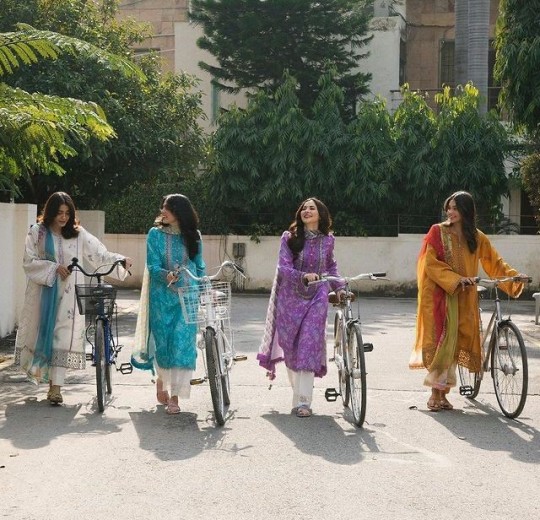
holiday in the homeland
#kinda miss the chaos#south asian#south asian aesthetic#south asian moodboard#desi#desi aesthetic#desicore#desiblr#desi tag#desi moodboard#desi academia#south asian academia#desi culture#south asian culture#desi stuff#desi girl#brown women#south asian women
121 notes
·
View notes
Text
date idea: we rob the british museum and reclaim our country’s stolen artifacts
21 notes
·
View notes
Text
Kalash people: Pakistan's Smallest Ethnic Minority

The Kalash people are a Pakistani ethnoreligious group. Having a population of only around 3500, they are one of the smallest ethnic groups in Pakistan.
Where do the Kalash people live?
The Kalash people live in the Kalasha valleys of the Khyber Pakhtunkhwa province in Pakistan, bordering the Afghan province of Nuristan. The Nuristanis of that region are considered to be ethnically and culturally related to the Kalash.
Who are the Kalash people descended from?
The Kalash people believe themselves to be descended from Alexander the Great's troops. Some genetic evidence however, claims the contrary (while some affirms it). Other scientists claim that the Kalash people are purely South Asian.
How do the Kalash people identify religiously?
Roughly half of the Kalash people are mostly muslim, after historically being forcibly converted as result of Abdul Rahman Khan's rule. The rest are mostly practicioners of the polytheistic, animist Kalash religion
Kalash celebrations / Chilam Joshi
The Kalash people have three main festivals, listed and described below:
Chilam Joshi
Chilam Joshi (also called "milk day" or "yogurt drink day"). During Chilam Joshi, men and women meet in hopes of finding a spouse. This festival is celebrated with drums and dancing. In 2022, this festival was celebrated from 14 May - 18 May.
2. Uchau
Uchau is celebrated during summer to "thank nature for blessing [the Kalash people] with the harvest season". This festival will be celebrated in 2022 from August 20th to August 24th.
3. Chawmos
During this festival, the Kalash people chant to the Balmain spirit of the Kalash religion. The Kalash people feast, up until the community elders declare the new year. Once they have declared the new year, boys and girls divide and make a bonfire. In 2022, this festival will be celebrated from 16 December to 22 December.
Kalash Clothing
Kalash clothing is very vibrant, often characterized by it's bright designs on dark fabric.

Sources: Kalasha valleys wikipedia, Nuristanis wikipedia, Kalash new worl encyclopedia, Kalash people wikipedia, Chawmos wikipedia, Chilam Joshi wikipedia, Chitral tour packages nature adventure club, Humans of Himalayas: Kalash people photo, Discover Pakistan: Chilam Joshi (this was on TV at my grandma's house), Kalash clothes picture.
#pakistan#afghanistan#afghan#pakistani#pakistani culture#ethinicity#culture#chilam joshi#kalash#nuristan#nuristani#khyber pakhtunkhwa#south asia#south asian#south asian culture#religion#history#alexander the great#chawmos
8 notes
·
View notes
Text

On the set for Thagyan
via qbalouch on Instagram
#Thagyan#quratulain balouch#zain zohaib#coke studio pakistan#coke studio#pakistan#Pakistani musicians#south asian culture#season 14#my edit#my upload
5 notes
·
View notes
Text

Perfumed Garden Jewellery Set
Inspired by the colours and shapes in Indian miniature paintings, this necklace features an antique Indian silver piece with two peacocks in the centre. The colour scheme of silver, blue, teal, and purple make this a very versatile set that combines with many outfits.
Materials and techniques: Glass seed beads, fringed glass beads, sodalite round beads, flower sugilite round beads, Swarovski crystal pearls in "petrol" colour, frosted glass beads, faceted glass beads, small Swarovski crystals, fire polished glass crystals, pewter cones, antique Indian silver centrepiece, silver plated findings, silver plated headpins, steel barrette, plastic coated beading wire, polymer beadwork thread
#jewelry#jewellery#handmade jewelry#katia hougaard#ornamentum by katia#jewellery design#handmade jewellery online#antique jewelry#jewelrydesigner#vintage jewelry#necklace#jewellery designer#earrings#hair ornament#hair clips#peacock#indian jewelry#south asian culture#south asian aesthetic#swarovski#swarovsky crystals#swarovski crystals#purple and blue#statement necklaces#necklace for women#sodalite#sugilite#seedbeads#silver jewelry
5 notes
·
View notes
Text

Royal Symmetra and Lifeweaver by R_EDIAL
262 notes
·
View notes
Text

˚₊· ͟͟͞͞➳❥𝑴𝒂𝒔𝒕𝒆𝒓𝒍𝒊𝒔𝒕 ˚₊· ͟͟͞͞➳❥𝑟𝑒𝑞𝑢𝑒𝑠𝑡𝑠 ˚₊· ͟͟͞͞➳❥𝑖𝑛𝑓𝑜 ˚₊· ͟͟͞͞➳❥𝑸𝒖𝒐𝒕𝒆𝒗

༄˚ ༘♡𝐇𝐨𝐥�� 𝐨𝐧! 𝐛𝐞𝐟𝐨𝐫𝐞 𝐲𝐨𝐮 𝐟𝐨𝐥𝐥𝐨𝐰/ 𝐃𝐍𝐈 𝐢𝐟 𝐲𝐨𝐮'𝐫𝐞:
❥𝐴𝑛𝑦 𝑘𝑖𝑛𝑑 𝑜𝑓 '𝑖𝑠𝑡' 𝑜𝑟 '𝑝ℎ𝑜𝑏𝑖𝑐' (𝐼𝑠𝑙𝑎𝑚𝑜𝑝ℎ𝑜𝑏𝑖𝑐, 𝑎𝑛𝑡𝑖𝑠𝑒𝑚𝑖𝑡𝑖𝑐, 𝑟𝑎𝑐𝑖𝑠𝑡, 𝑧𝑖𝑜𝑛𝑖𝑠𝑡, 𝑠𝑒𝑥𝑖𝑠𝑡 𝑒𝑡𝑐.).
❥ 𝑆𝑡𝑟𝑖𝑐𝑡𝑙𝑦 𝑁$𝐹𝑊 𝑏𝑙𝑜𝑔𝑠/18+ 𝑏𝑙𝑜𝑔𝑠 (𝐸𝑠𝑝𝑒𝑐𝑖𝑎𝑙𝑙𝑦 𝑖𝑓 𝑦𝑜𝑢 𝑤𝑟𝑖𝑡𝑒 𝑎𝑏𝑜𝑢𝑡 𝑚𝑖𝑛𝑜𝑟𝑠). 𝑇ℎ𝑖𝑠 𝑖𝑠 𝑎 𝒔𝒕𝒓𝒊𝒄𝒕𝒍𝒚 𝑠𝑓𝑤 𝑏𝑙𝑜𝑔!
❥ 𝑃3𝑑0/!𝑛𝑐3𝑠𝑡/$𝐶𝑅@𝑇/𝑛0𝑛-𝑐0𝑛 (𝑜𝑟 𝑎𝑛𝑦𝑡ℎ𝑖𝑛𝑔 𝑎𝑙𝑜𝑛𝑔 𝑡ℎ𝑜𝑠𝑒 𝑙𝑖𝑛𝑒𝑠) 𝑤𝑟𝑖𝑡𝑒𝑟𝑠/𝑐𝑜𝑛𝑠𝑢𝑚𝑒𝑟𝑠 𝑚𝑢𝑠𝑡 𝑘𝑒𝑒𝑝 𝑎 50000 𝑓𝑜𝑜𝑡 𝑑𝑖𝑠𝑡𝑎𝑛𝑐𝑒 𝑎𝑡 𝑎𝑙𝑙 𝑡𝑖𝑚𝑒𝑠.
❥ 𝐷𝑒𝑢𝑐𝑒 ℎ𝑎𝑡𝑒𝑟𝑠 (/𝑗 𝑏𝑢𝑡 𝑛𝑜𝑡 𝑟𝑙𝑙𝑦).
❥ 𝑁𝑜𝑛-𝑎𝑠𝑖𝑎𝑛𝑠 𝑡ℎ𝑎𝑡 𝑓𝑒𝑡𝑖𝑠ℎ𝑖𝑠𝑒/ℎ𝑎𝑣𝑒 𝑎𝑛 𝑜𝑟𝑖𝑒𝑛𝑡𝑎𝑙 𝑎𝑒𝑠𝑡ℎ𝑒𝑡𝑖𝑐- 𝑖𝑡'𝑠 𝑛𝑜𝑡 𝑐𝑢𝑡𝑒, 𝑖𝑡'𝑠 𝑤𝑒𝑖𝑟𝑑.
❥𝐵𝑙𝑎𝑛𝑘 𝑏𝑙𝑜𝑔𝑠 𝑤𝑖𝑙𝑙 𝑔𝑒𝑡 𝑏𝑙𝑜𝑐𝑘𝑒𝑑 𝑢𝑛𝑙𝑒𝑠𝑠 𝑖𝑡'𝑠 𝑚𝑎𝑑𝑒 𝑐𝑙𝑒𝑎𝑟 𝑡ℎ𝑒𝑦'𝑟𝑒 𝑛𝑜𝑡 𝑎 𝑏𝑜𝑡.

𝑂𝑛𝑒 𝑚𝑜𝑟𝑒 𝑡ℎ𝑖𝑛𝑔 𝑏𝑒𝑓𝑜𝑟𝑒 𝑦𝑜𝑢 𝑔𝑜!....
✎ (❁ᴗ͈ˬᴗ͈) ♡ میں تم سے پیار کرتا ہوں

@mshroom1e @maddog69420
#Pinned post#DNI#twisted wonderland x reader#twisted wonderland#Twst#twst x reader#South asian#desi#desi culture#south asian culture
21 notes
·
View notes
Text

“If you wanted to hurt me where it mattered, you should have poisoned my tea.”
#sri lanka#south asia#dark academia#light academia#Sri Lankan Academia#South Asian Academia#Sri Lankan Academic#South Asian Academic#Dark Academic#Light Academic#Desi Academia#Desi Academic#poc dark academia#poc dark academic#sri lankan culture#south asian culture#desi culture#tea#aesthetic#food academia#food#moodboard#desi moodboard#Sri Lankan moodboard#south Asian moodboard
24 notes
·
View notes
Text
its perahara season.
one of the many things i love about august
and im fucking lucky enough to here the sound of the traditional drums form the temple near me
im so fuckin happy cuz everytime i hear them i fall in love with my culture all over again
0 notes
Text
In addition to my Monkey Man post from earlier, the always kind & sweet Aparna Verma (author of The Phoenix King, check it out) asked that I do a thread on Hijras, & more of the history around them, South Asia, mythology (because that's my thing), & the positive inclusion of them in Monkey Man which I brought up in my gushing review.
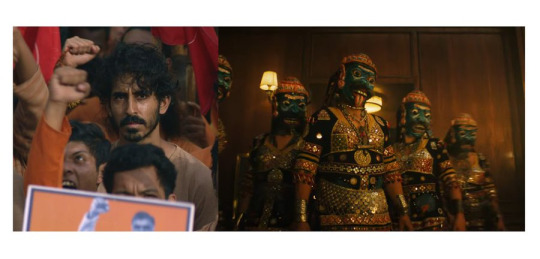
Hijra: They are the transgender, eunuch, or intersex people in India who are officially recognized as the third sex throughout most countries in the Indian subcontinent. The trans community and history in India goes back a long way as being documented and officially recognized - far back as 12th century under the Delhi Sultanate in government records, and further back in our stories in Hinduism. The word itself is a Hindi word that's been roughly translated into English as "eunuch" commonly but it's not exactly accurate.
Hijras have been considered the third sex back in our ancient stories, and by 2014 got official recognition to identify as the third gender (neither male or female) legally. Pakistan, Nepal, Bangladesh, and India have accepted: eunuch, trans, intersex people & granted them the proper identification options on passports and other government official documents.
But let's get into some of the history surrounding the Hijra community (which for the longest time has been nomadic, and a part of India's long, rich, and sometimes, sadly, troubled history of nomadic tribes/people who have suffered a lot over the ages. Hijras and intersex people are mentioned as far back as in the Kama Sutra, as well as in the early writings of Manu Smriti in the 1st century CE (Common Era), specifically said that a third sex can exist if possessing equal male and female seed.
This concept of balancing male/female energies, seed, and halves is seen in two places in South Asian mythos/culture and connected to the Hijra history.
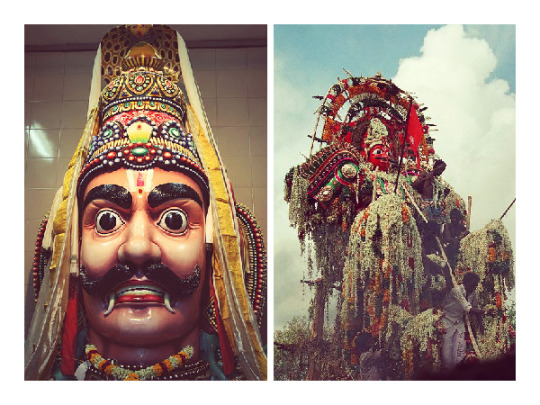
First, we have Aravan/Iravan (romanized) - who is also the patron deity of the transgender community. He is most commonly seen as a minor/village deity and is depicted in the Indian epic Mahabharata. Aravan is portrayed as having a heroic in the story and his self-sacrifice to the goddess Kali earns him a boon.

He requests to be married before his death. But because he is doomed to die so shortly after marriage, no one wants to marry him.
No one except Krishna, who adopts his female form Mohini (one of the legendary temptresses in mythology I've written about before) and marries him. It is through this union of male, and male presenting as female in the female form of Mohini that the seed of the Hijras is said to begun, and why the transgender community often worships Aravan and, another name for the community is Aravani - of/from Aravan.
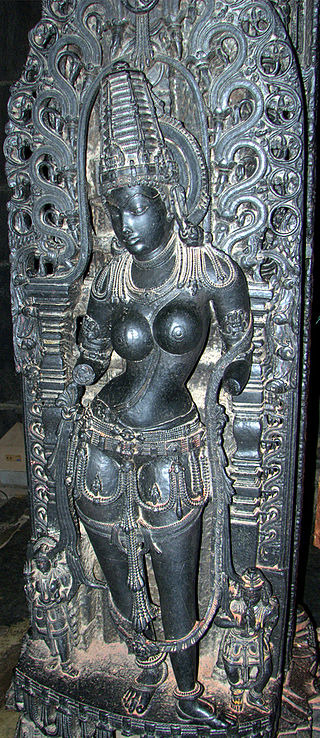
But that's not the only place where a gender non conforming divine representation can be seen. Ardhanarishvara is the half female form of lord Shiva, the destroyer god.
Shiva combines with his consort Parvarti and creates a form that represents the balancing/union between male/female energies and physically as a perfectly split down the middle half-male half-female being. This duality in nature has long been part of South Asian culture, spiritual and philosophical beliefs, and it must be noted the sexuality/gender has often been displayed as fluid in South Asian epics and the stories. It's nothing new.

Many celestial or cosmic level beings have expressed this, and defied modern western limiting beliefs on the ideas of these themes/possibilities/forms of existence.
Ardhanarishvara signifies "totality that lies beyond duality", "bi-unity of male and female in God" and "the bisexuality and therefore the non-duality" of the Supreme Being.
Back to the Hijra community.
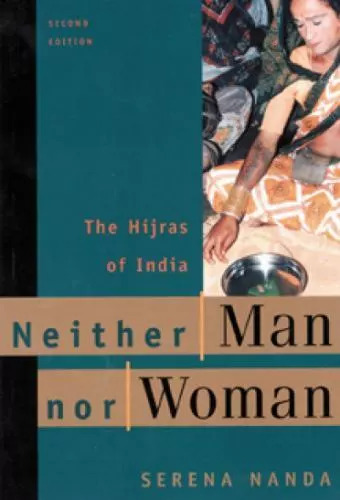
They have a complex and long history. Throughout time, and as commented on in the movie, Monkey Man, the Hijra community has faced ostracization, but also been incorporated into mainstream society there. During the time of the Dehli Sultanate and then later the Mughal Empire, Hijras actually served in the military and as military commanders in some records, they were also servants for wealthy households, manual laborers, political guardians, and it was seen as wise to put women under the protection of Hijras -- they often specifically served as the bodyguards and overseers of harems. A princess might be appointed a Hijra warrior to guard her.

But by the time of British colonialism, anti-Hijra laws began to come in place folded into laws against the many nomadic tribes of India (also shown in part in Monkey Man with Kid (portrayed by Dev Patel) and his family, who are possibly
one of those nomadic tribes that participated in early theater - sadly by caste often treated horribly and relegated to only the performing arts to make money (this is a guess based on the village play they were performing as no other details were given about his family).
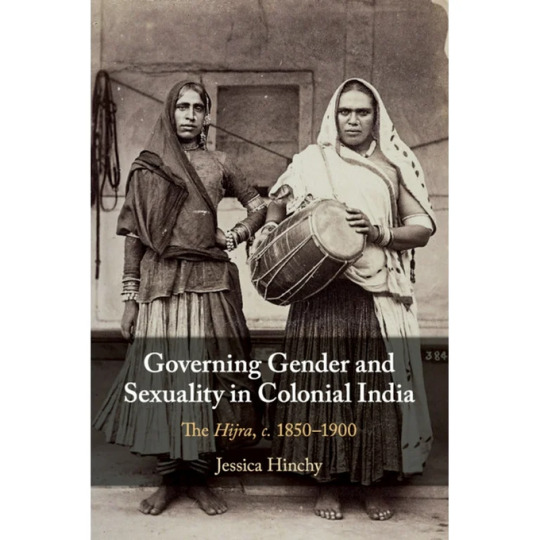
Hijras were criminalized in 1861 by the Indian Penal Code enforced by the British and were labeled specifically as "The Hijra Problem" -- leading to an anti-Hijra campaign across the subcontinent with following laws being enacted: punishing the practices of the Hijra community, and outlawing castration (something many Hijra did to themselves). Though, it should be noted many of the laws were rarely enforced by local Indian officials/officers. But, the British made a point to further the laws against them by later adding the Criminal Tribes Act in 1871, which targeted the Hijra community along with the other nomadic Indian tribes - it subjected them to registration, tracking/monitoring, stripping them of children, and their ability to sequester themselves in their nomadic lifestyle away from the British Colonial Rule.
Today, things have changed and Hijras are being seen once again in a more positive light (though not always and this is something Monkey Man balances by what's happened to the community in a few scenes, and the heroic return/scene with Dev and his warriors). All-hijra communities exist and sort of mirror the western concept of "found families" where they are safe haven/welcoming place trans folks and those identifying as intersex.
These communities also have their own secret language known as Hijra Farsi, which is loosely based on Hindi, but consists of a unique vocabulary of at least 1,000 words.
As noted above, in 2014, the trans community received more legal rights.
Specifically: In April 2014, Justice K. S. Radhakrishnan declared transgender to be the third gender in Indian law in National Legal Services Authority v. Union of India.
Hijras, Eunuchs, apart from binary gender, be treated as "third gender" for the purpose of safeguarding their rights under Part III of our Constitution and the laws made by the Parliament and the State Legislature. Transgender persons' right to decide their self-identified gender is also upheld and the Centre and State Governments are directed to grant legal recognition of their gender identity such as male, female or as third gender.
I've included some screenshots of (some, not all, and certainly not the only/definitive reads) books people can check out about SOME of the history. Not all again. This goes back ages and even our celestial beings/creatures have/do display gender non conforming ways.
There are also films that touch on Hijra history and life. But in regards to Monkey Man, which is what started this thread particularly and being asked to comment - it is a film that positively portrayed India's third sex and normalized it in its depiction. Kid the protagonist encounters a found family of Hijras at one point in the story (no spoilers for plot) and his interactions/acceptance, living with them is just normal. There's no explaining, justifying, anything to/for the audience. It simply is. And, it's a beautiful arc of the story of Kid finding himself in their care/company.
#hijra#trans representation#monkey man#dev patel#transgender#trans rights#trans rights are human rights#third sex#indian history#indian culture#colonialism#imperialism#south Asian mythos#South Asian myths#Aravan#Iravan#Mahabharata#hindu mythology#hindu gods#kali goddess#krishna#hindu mythology art#Ardhanarishvara#Shiva#Parvarti#sexuality#gender fluid#fluid sexuality#trans community#transgender rights
321 notes
·
View notes